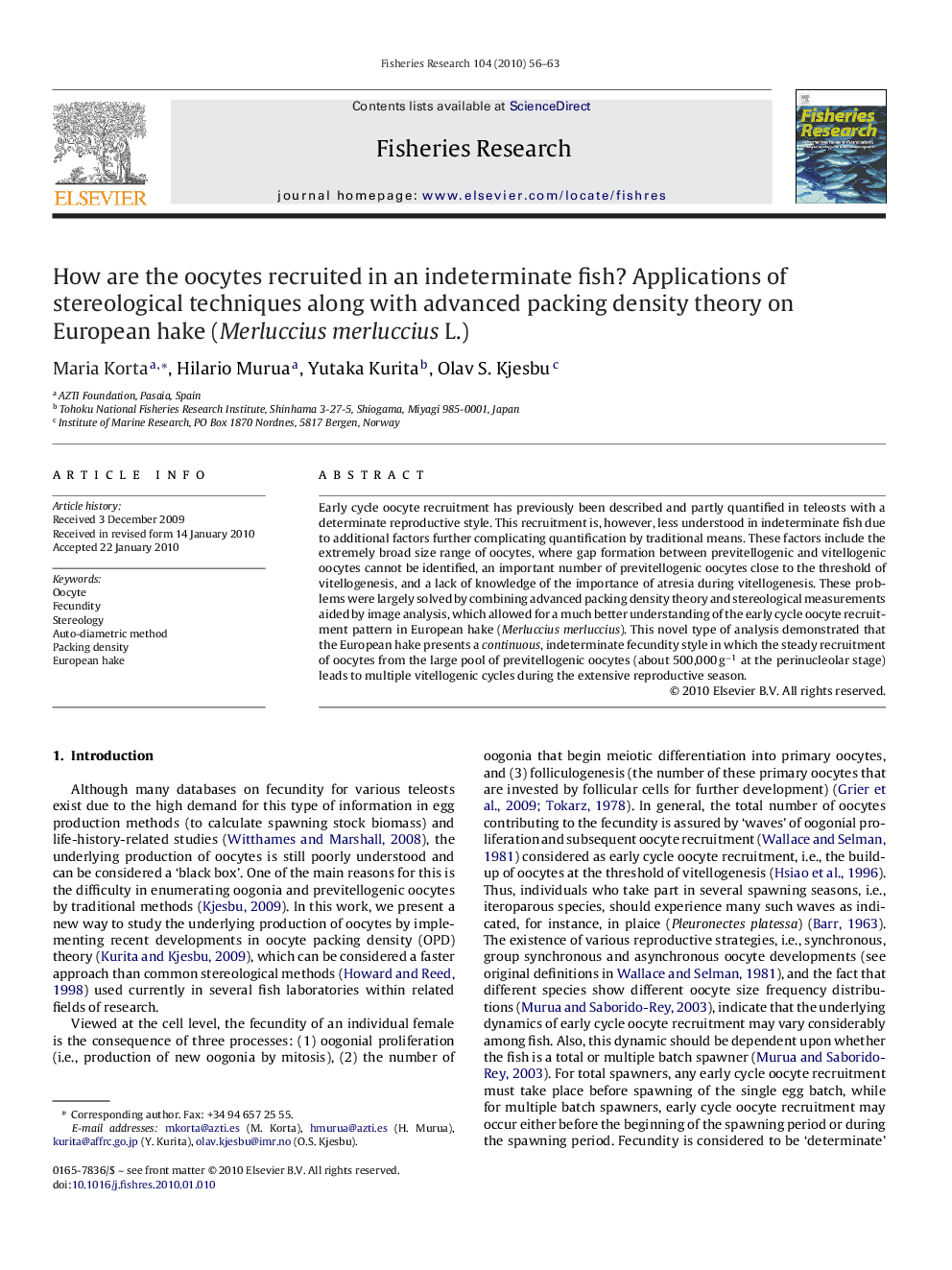| Article ID | Journal | Published Year | Pages | File Type |
|---|---|---|---|---|
| 4543867 | Fisheries Research | 2010 | 8 Pages |
Early cycle oocyte recruitment has previously been described and partly quantified in teleosts with a determinate reproductive style. This recruitment is, however, less understood in indeterminate fish due to additional factors further complicating quantification by traditional means. These factors include the extremely broad size range of oocytes, where gap formation between previtellogenic and vitellogenic oocytes cannot be identified, an important number of previtellogenic oocytes close to the threshold of vitellogenesis, and a lack of knowledge of the importance of atresia during vitellogenesis. These problems were largely solved by combining advanced packing density theory and stereological measurements aided by image analysis, which allowed for a much better understanding of the early cycle oocyte recruitment pattern in European hake (Merluccius merluccius). This novel type of analysis demonstrated that the European hake presents a continuous, indeterminate fecundity style in which the steady recruitment of oocytes from the large pool of previtellogenic oocytes (about 500,000 g−1 at the perinucleolar stage) leads to multiple vitellogenic cycles during the extensive reproductive season.
